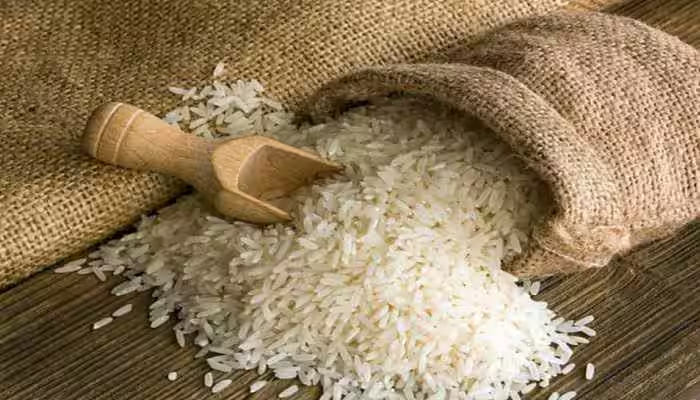Tags
The 10cm Super-Rice That Could Feed the First Lunar Colony
By Society for Experimental Biology

What happens when scientists try to reinvent rice for life on the Moon? You get a tiny, 10cm-tall “super-rice” that might one day nourish astronauts living on lunar bases.
The Moon-Rice project, a collaboration among top Italian institutions, is on a mission to genetically craft space-ready crops that can grow in microgravity, offer vital nutrients, and even lift morale on long missions. Beyond supporting future Moon or Mars colonies, the research could also yield hardy crops for harsh environments right here on Earth — from deserts to polar stations.
The Future of Food in Space
Long-term survival in space will require more than advanced technology — it will depend on our ability to grow fresh food far from Earth. A groundbreaking effort known as the Moon-Rice project is exploring how experimental plant science can help create a highly adaptable rice crop suited for life on other planets. This research could support not only future space missions but also farming in some of Earth’s harshest conditions.
Currently, astronauts rely on food shipments from Earth, which are mostly made up of processed and shelf-stable meals. While convenient, these options lack fresh ingredients that are essential for maintaining health during extended stays in space. A diet that includes foods rich in vitamins, antioxidants, and fiber could play a critical role in reducing the physical toll of space travel.
Designing the Perfect Space Crop
The goal of the Moon-Rice project is to engineer a rice plant capable of thriving during long-term space missions, including life on permanent bases on the Moon or Mars. “Living in space is all about recycling resources and living sustainably,” says Marta Del Bianco, a plant biologist at the Italian Space Agency. “We are trying to solve the same problems that we face here on Earth.”
Dr. Del Bianco explains that one of the major challenges is the current size of crops grown on Earth. Even many dwarf varieties of rice are still too big to be grown reliably in space. “What we need is a super-dwarf, but this comes with its own challenges,” she says. “Dwarf varieties often come from the manipulation of a plant hormone called gibberellin, which can reduce the height of the plant, but this also creates problems for seed germination. They’re not an ideal crop, because in space, you just don’t have to be small, you must also be productive.”

The Moon-Rice project is not just a solo effort by the Italian Space Agency, but also involves the collaboration of three Italian Universities. “The University of Milan has a very strong background in rice genetics, the University of Rome ‘Sapienza’ specializes in the manipulation of crop physiology, and the University of Naples ‘Federico II’ has an amazing heritage in space crop production,” says Dr. Del Bianco. “We started this four-year project nine months ago, so it’s very much a work in progress, but the preliminary results we have now are really promising,” says Dr. Del Bianco.
Early Breakthroughs and Genetic Tweaks
“Researchers at the University of Milan are isolating mutant rice varieties that can grow to just 10 cm high, so they’re really tiny and this is a great starting point,” says Dr. Del Bianco. “At the same time, Rome has identified genes that can alter the plant architecture to maximize production and growth efficiency.” Additionally, since meat production will be too inefficient for resource and space-limited space habitats, Dr. Del Bianco and her team are looking into enriching the protein content of the rice by increasing the ratio of protein-rich embryo to starch.
Dr. Del Bianco’s own personal focus is on how the rice plants will cope with micro-gravity. “We simulate micro-gravity on Earth by continually rotating the plant so that the plant is pulled equally in all directions by gravity. Each side of the plant gets activated continuously and it doesn’t know where the up and down is,” says Dr. Del Bianco. “It’s the best we can do on Earth because, unfortunately, doing experiments in real microgravity conditions, i.e. in space, is complex and expensive.”
The Psychological Power of Plants
Not only can fresh food be more nutritious than pre-cooked and packaged space meals, but it has significant psychological benefits too. “Watching and guiding plants to grow is good for humans, and while pre-cooked or mushy food can be fine for a short period of time, it could become a concern for longer-duration missions,” says Dr. Del Bianco.
Space exploration is a very demanding job that requires astronauts to be in peak physical and psychological condition. “If we can make an environment that physically and mentally nourishes the astronauts, it will reduce stress and lower the chances of people making mistakes. In space, the best case of a mistake is wasted money, and the worst case is the loss of lives,” says Dr. Del Bianco.
Earthly Benefits of Space Agriculture
The Moon-Rice project is not only beneficial for space explorers but will have useful applications for growing plants in controlled environments on Earth too. “If you can develop a robust crop for space, then it could be used at the Arctic and Antarctic poles, or in deserts, or places with only a small amount of indoor space available,” says Dr. Del Bianco.
This research was presented at the Society for Experimental Biology Annual Conference in Antwerp, Belgium.
https://scitechdaily.com/the-10cm-super-rice-that-could-feed-the-first-lunar-colony/Published Date: July 18, 2025






